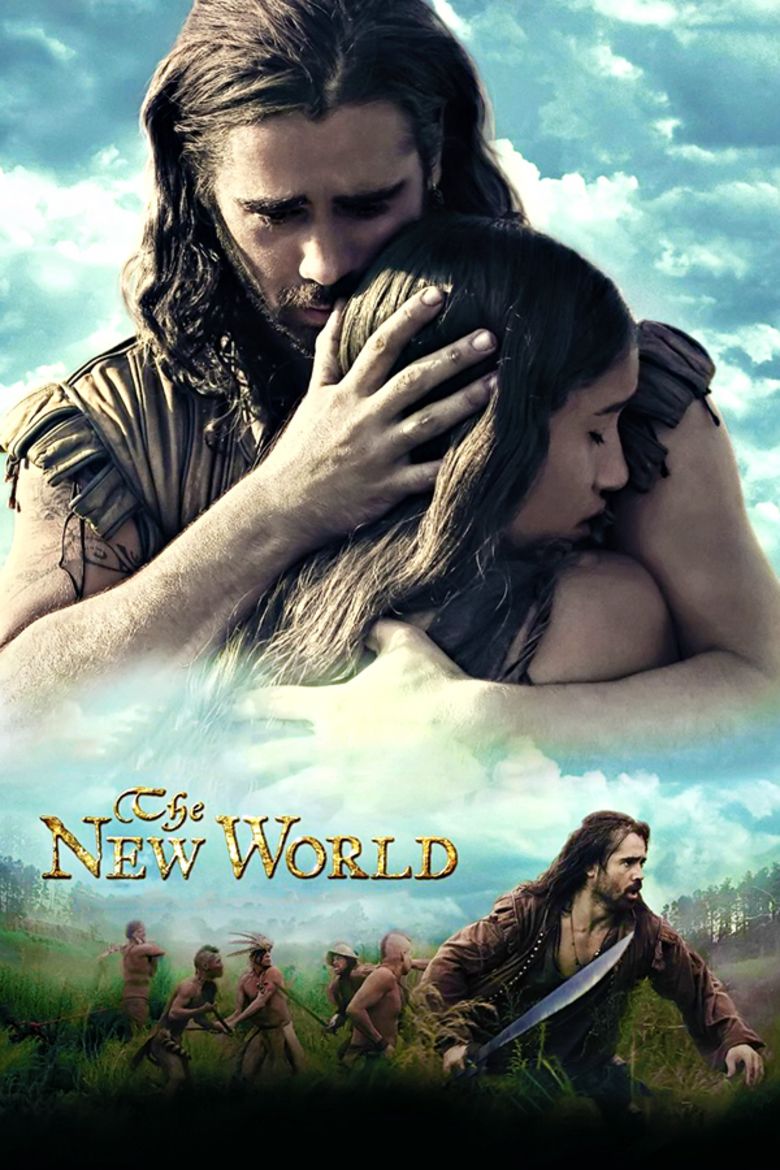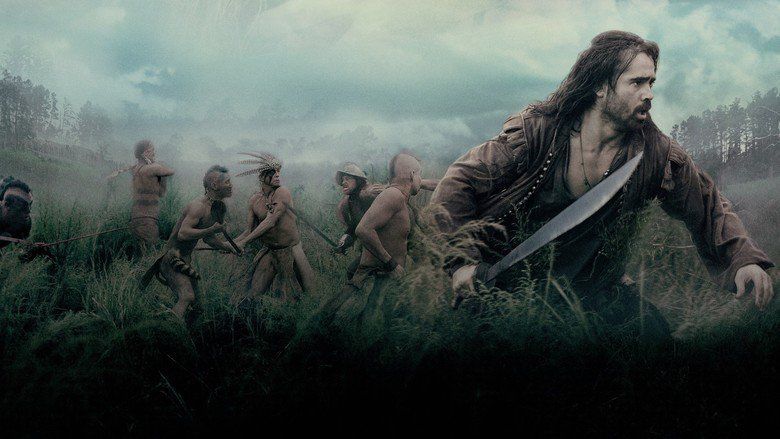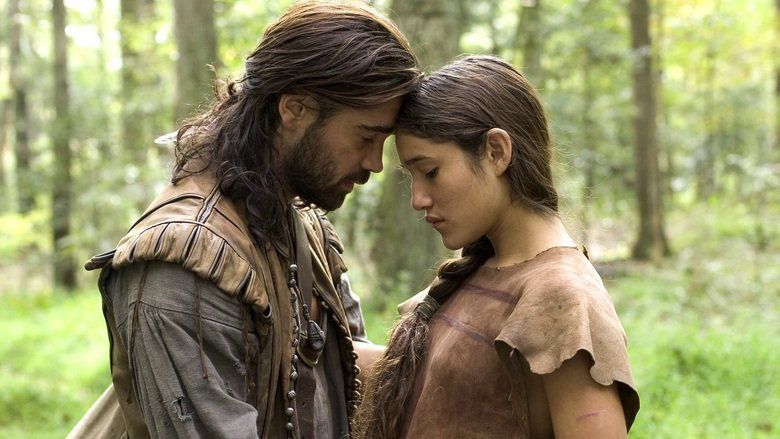The New World (2005 film)
7.4 /10 1 Votes
62% Rotten Tomatoes 69% Metacritic Genre Biography, Drama, History Duration Country United KingdomUnited States | 6.7/10 IMDb 4/4 Roger Ebert Release date April 13, 2006 (India) Writer Terrence Malick Language English | |||||||||||||||||||||||||||||||||
 | ||||||||||||||||||||||||||||||||||
Release date December 25, 2005 (2005-12-25) (United States)January 27, 2006 (2006-01-27) (United Kingdom) Cast (Captain Smith), Q'orianka Kilcher (Pocahontas), (Captain Newport), (John Rolfe), (Powhatan), (Opechancanough)Similar movies Related Terrence Malick movies Tagline Once discovered, it was changed forever. | ||||||||||||||||||||||||||||||||||
The New World is a 2005 British-American romantic historical drama film written and directed by Terrence Malick, depicting the founding of the Jamestown, Virginia, settlement and inspired by the historical figures Captain John Smith, Pocahontas of the Powatan Native American tribe, and Englishman, John Rolfe. It is the fourth feature film written and directed by Malick.
Contents
- The new world 2005 trailer
- Plot
- Development
- Filming
- Post production
- Music
- Reception
- Historical accuracy
- Home media
- References

The cast includes Colin Farrell, Q'orianka Kilcher, Christopher Plummer, Christian Bale, August Schellenberg, Wes Studi, David Thewlis, and Yorick van Wageningen. The production team includes director of photography Emmanuel Lubezki, producer Sarah Green, production designer Jack Fisk, costume designer Jacqueline West, and film editors Richard Chew, Hank Corwin, Saar Klein, and Mark Yoshikawa.

The New World received many award nominations for Lubezki's cinematography, Kilcher's acting, and Horner's score. The work was initially met with an only mildly positive critical response, although several critics later ranked it as one of the best films of the 2000s.

The new world 2005 trailer
Plot

In 1607, Pocahontas, the spirited and adventurous daughter of Chief Powhatan, and others from her tribe witness the arrival of three ships sent by English royal charter to found a colony in the New World. Aboard one of the ships is Captain John Smith, below decks, in chains. While initially sentenced to death by hanging for his mutinous remarks, once ashore, Smith is pardoned by Captain Christopher Newport, the leader of the expedition.
While the prospects for the settlement are initially bright, disease, poor discipline, supply shortages, and tensions with the local Native Americans (whom Newport calls "the naturals") place the expedition in jeopardy. Smith takes a small group of men upriver to seek trade while Newport returns to England for supplies. While on this mission, Smith is captured by a group of Native Americans and brought before their Chief Powhatan. After being questioned, the captain is nearly executed. He is spared when Pocahontas intervenes and saves his life.
Living among the Native Americans as a prisoner for an extended period, Smith is treated well and earns the friendship and respect of the tribe. Coming to admire this new way of life, he falls deeply in love with Pocahontas. She is intrigued by the Englishman and his ways. The chief returns Smith to Jamestown with the understanding that the English are to leave the following spring, once their boats have returned. Upon his return, Smith encounters the settlement in turmoil. Pressed into accepting the governorship, he finds the peace he had with the Natives replaced by privation, death, and the difficult responsibilities of his new position. Smith wishes to return to his love but dismisses such action. He thinks of his time among the Native Americans as "a dream" from which he has awoken. Their numbers dwindle throughout the brutal winter, and the settlers are saved only when Pocahontas and a rescue party arrive with food, clothing, and supplies.
As spring arrives, Powhatan realizes that the English do not intend to leave. Discovering his daughter's actions, he orders an attack on Jamestown and exiles Pocahontas. Repulsing the attack, the settlers learn of Pocahontas' banishment from her own homeland. They organize a trade so that the young woman can be taken captive and used as leverage to avoid further assaults. Samuel Argall convinces the settlers on a trading expedition up the Potomac River to abduct Pocahontas from the Patawomecks as a prisoner to negotiate with her father for an exchange for some captive settlers, but not the stolen weapons and tools. When Smith opposes the plan, he is removed as governor. After Pocahontas is brought to Jamestown, she and Smith renew their love affair. The return of Captain Newport adds complications. Newport tells Smith of an offer from the king to lead his own expedition to find passage to the East Indies. Torn between his love and the promise of his career, the captain decides to return to England. Before he departs, he leaves instructions with another settler. The settler later tells Pocahontas that Smith has died in the crossing, which leaves her distraught.
Devastated, Pocahontas sinks into depression and still mourns the "death" of her love. Continuing to live in Jamestown, she is eventually comforted by a new settler, John Rolfe. He helps her adapt to the English way of life. She is baptized, receives education, and eventually marries Rolfe and gives birth to a son whom they name Thomas. She later learns that Captain Smith is indeed still alive, news to which she has a violent reaction. Pocahontas finds herself rejecting Rolfe and retreats to her loyalty to Smith, thinking fate had spared his life and they were to be reunited. Rolfe and his family are given a chance to travel to England. Arriving in London and sharing an audience with the king and queen, Pocahontas is overwhelmed by the wonders of this "New World." While there, she has a private meeting with Smith.
The reunion is uncomfortable at times. The state of their present lives shows how much they each have changed. Smith admits that he may have made a mistake in choosing his career over his love for Pocahontas. He says that what they experienced in Virginia was not a dream but instead "the only truth." When asked by Pocahontas if he ever found his Indies, he replies, "I may have sailed past them." The two part, never to meet again. Realizing that Rolfe is the man she thought he was and more, she finally accepts him as her husband and love. Pocahontas and Rolfe make arrangements to return to Virginia. Before they depart, she falls ill from pneumonia and dies.
The film ends with images of the young adult Pocahontas and her young son happily playing in the gardens of their English estate. Rolfe, in a voice over, reads a letter, addressed to their only son about his deceased Native American mother. In the film's closing moments, Pocahontas says, "Mother, now I know where you live" with the film fading out over images of nature in the New World.
Development
Terrence Malick began work on the script for The New World in the late 1970s. After The Thin Red Line, Malick worked on a film about Che Guevara and his failed revolution in Bolivia. When financing had yet to come through, Malick was offered the chance to direct The New World and left the Guevara project in March 2004. Production on The New World was underway by July of that year.
Filming
The film was notable for its emphasis on authenticity, from location, settings and costumes to the use of Native American actors and extras who were trained by Blair Rudes, professor of linguistics at UNC-Charlotte, to speak a form of the extinct Powhatan language (a type of Virginian Algonquian) reconstructed for the film by Rudes.
Principal photography wrapped after three and a half months in November 2004.
Post-production
The film was originally set to be released in November 2005, but release had to be postponed. Malick was still editing the footage he had shot. He is well known for editing his films up until the last minute, often trimming his films and leaving entire characters out of the final print, as is the case with The Thin Red Line. In early December, a 150-minute version was shown to critics for awards season consideration. It was released for a week from Christmas to New Year's Day in two theaters each in Los Angeles and New York to qualify for the Academy Awards.
For the film's wide release, which began on January 20, 2006, Malick re-edited the film, cutting it to 135 minutes, but also adding footage not seen in the first release. He altered some of the film's extensive voiceovers to clarify the plot. Substantial changes were made to the first half-hour of the picture, seemingly to speed the plot along.
Music
The musical score for The New World was composed by James Horner. He worked first from the script and then from edited scenes. As the film was re-edited, more changes to the score were required. Because Malick's editing was extensive and involved reordering or dropping passages or inserting sequences, much of Horner's score was not used. For the final version, Malick used sections of Horner's music along with the prelude to Wagner's Das Rheingold, Mozart's Piano Concerto No. 23, and other pieces. Horner and Glen Ballard wrote and recorded the song "Listen to the Wind", sung by Hayley Westenra, for the closing credits, but this too was unused.
Reception
The New World opened to moderately positive reviews. The film has a 62% "fresh" rating on Rotten Tomatoes with the consensus stating: "Despite arresting visuals and strong lead performances, The New World suffers from an unfocused narrative that will challenge viewers' attention spans over its 2 1/2 hours." Another review aggregator Metacritic gave the film a score of 69/100, indicating "generally favorable reviews." Roger Ebert awarded the film a full four stars, arguing that "what distinguishes Malick's film is how firmly he refuses to know more than he should...The events in his film, including the tragic battles between the Indians and the settlers, seem to be happening for the first time." He also lauded Malick as a "visionary." Mick LaSalle of the San Francisco Chronicle hailed the film as "a masterpiece," while numerous others such as Ty Burr of The Boston Globe, Peter Travers of Rolling Stone, Richard Corliss of Time, and David Ansen of Newsweek gave the film positive reviews.
On the other hand, Stephen Hunter of The Washington Post faulted the film for being "stately almost to the point of being static", while others such as Joe Morgenstern of The Wall Street Journal criticized it as "sluggish," "underdramatized," and "emotionally remote." While its release date was timed for consideration for awards season, it was nominated for only the Academy Award for Best Cinematography for Emmanuel Lubezki at the 78th Academy Awards.
In November 2009, Time Out New York ranked the film as the fourth-best of the decade, saying:
"The particular power of this tone poem comes from how quietly resigned both characters are to their fates, as if they sense a guiding hand in their every action. The final passages of Malick’s idyll, after Pocahontas takes a fateful ocean journey, are the finest work of his career, most notably in his portrayal of the princess’s death and transfiguration—a shattering five-minute sequence that never fails to move."
In January 2010, Mick LaSalle of the San Francisco Chronicle designated it the No. 1 film of the decade.
"Terence Malick's one-of-a-kind film, about the life of Pocahontas and the dawn of American history, contains some of the best filmmaking imaginable – some of it beyond imagining. I have seen it at least five times and have no idea how Malick knew, when he put it all together, that the movie would even make sense. It's difficult to write a great short poem. It's difficult to write a great long novel. But to write a great long poem that's the size of a great long novel – one that makes sense, doesn't flag and is exponentially better than the short poem or the long novel ever would have been – that's almost impossible. Malick did it. With images."
The French film magazine Cahiers du cinéma ranked the film as 9th place in its list of best films of the décade 2000-2009.
Film and television critic Matt Zoller Seitz has said it is his favorite film.
In The Guardian, John Patterson writes that The New World "doesn't have fans, just fanatics":
"This decade hasn't been up to much, movie-wise, but I am more than ever convinced that when every other scrap of celluloid from 2000-2009 has crumbled to dust, one film will remain, like some Ozymandias-like remnant of transient vanished glory in the desert. And that film is The New World, Terrence Malick's American foundation myth, which arrived just as the decade reached its dismal halfway point, in January 2006. [...] The New World is a bottomless movie, almost unspeakably beautiful and formally harmonious. The movie came and went within a month, and its critical reception was characterised for the most part by bafflement, condescension, lazy ridicule and outright hostility. [...] Its siblings are to be found throughout movie history and across all national and stylistic boundaries, from the silents to Jean-Luc Godard, James Benning and Stan Brakhage, or in Winstanley and Barry Lyndon. Its cultural hinterland is made up not just of other movies, but of Buddhism, ethnography and naturalism, Wagner, Mozart and the structural forms of classical music, Malick's enthusiasm for bird-watching, and a helping of Heidegger and Kant [...] It is both ancient and modern, cinema at its purest and most organic, its simplest and most refined [...]."
In a contribution to The cinema of Terrence Malick: Poetic visions of America, film scholar Mark Cousins writes:
"By the end of The New World, it seemed to me, I had experienced something like a Bach's Mass in B minor or a poem by Percy Bysshe Shelley. It was about rapture and the end of rapture. It showed me seeing. It made me sensible."
In a 2016 international critics' poll conducted by BBC, The New World was voted the 39th-greatest film since 2000.
Historical accuracy
According to History professor Cathy Schultz, Powhatan's people "were far from the innocent, childlike creatures we see in the film." Schultz points out that Powhatan "ruled by conquest over the surrounding tribes," in contrast to the film's depiction of them as peaceful except where in conflict with the English. Furthermore, most scholars agree that there was no romantic relationship between Pocahontas and Smith. She would have been 10 years old in 1608 when they were said to have first met.
Home media
A third, 172-minute version, dubbed "The Extended Cut", was issued by New Line on DVD in October 2008. It contains new scenes and expansions to other scenes. The 135-minute and 172-minute cuts are widely available on DVD worldwide, with the 172-minute cut also released on Blu-ray. The 150-minute version was released commercially only twice - as a Digital Download briefly available to buyers of the US "Extended Cut" DVD in 2008, and on DVD in Italy as part of Italian distributor Eagle Pictures's 2-disc set, containing both the 150-minute and 135-minute versions of the film.
On July 26, 2016, all three cuts were released on Blu-ray and DVD in the United States by The Criterion Collection with the 172-minute extended cut from a new 4K digital restoration supervised by cinematographer Emmanuel Lubezki and director Terrence Malick.
References
The New World (2005 film) WikipediaThe New World (2005 film) IMDbThe New World (2005 film) Rotten TomatoesThe New World (2005 film) Roger EbertThe New World (2005 film) MetacriticThe New World (2005 film) themoviedb.org
